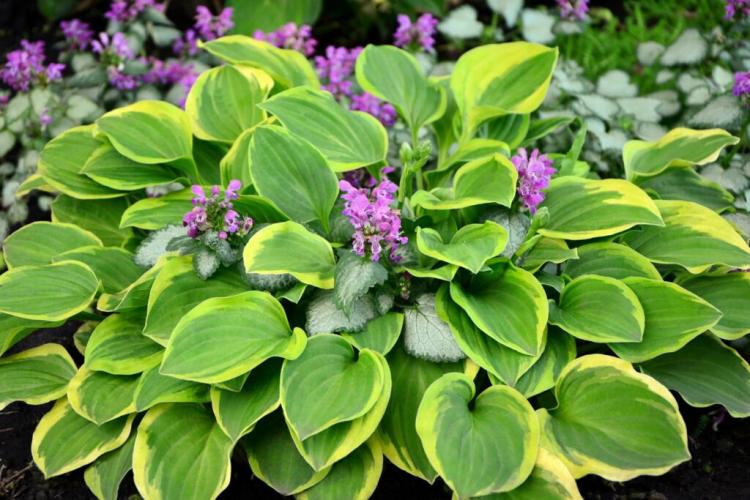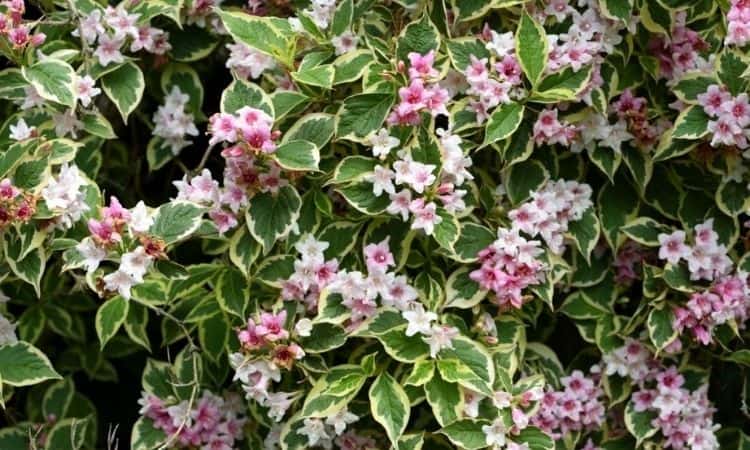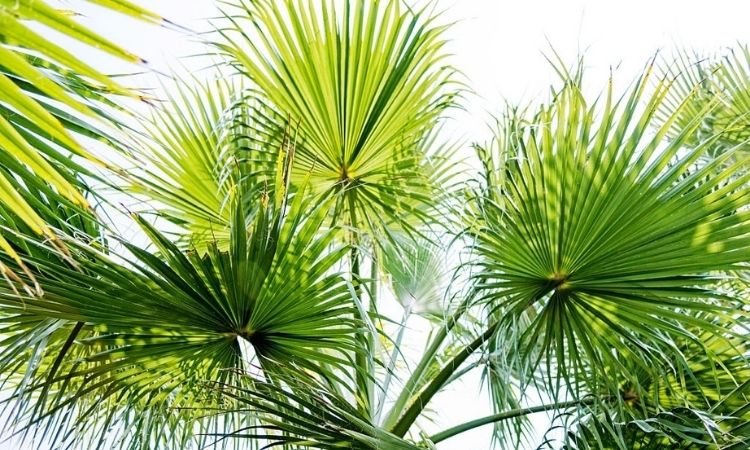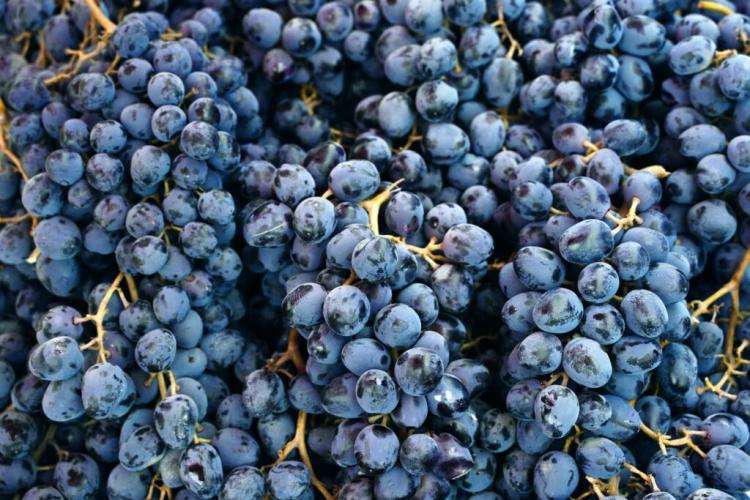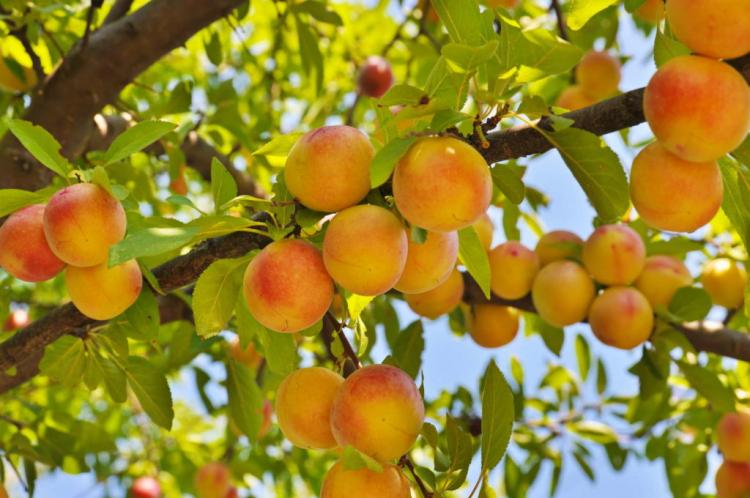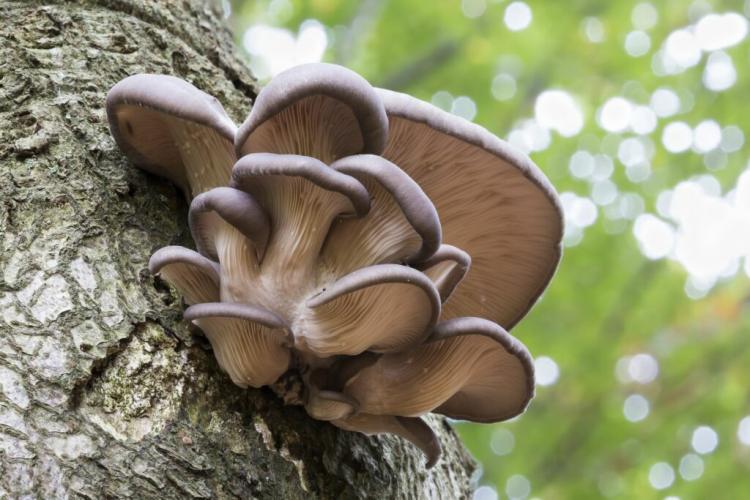Hostas: Everything for planting, caring for and propagating
The beautiful ornamental leaf impresses with its simple elegance. Here you can find out everything – from planting to caring for hostas.
Not all places in the garden are spoiled by the sun. In contrast to many other plants, the hosta feels very comfortable in the shade. It is therefore ideal for greening shady or damp locations in the garden. With its impressive foliage, it turns otherwise neglected parts of the garden into real gems. So that you too can successfully grow hostas, we have summarized everything you need to know about the popular ornamental leaf in this article. Here you can find out where the hosta comes from, which varieties there are, what you should pay attention to when buying, how to plant and care for them, and how you can propagate hostas yourself.
Hostas: origin and characteristics
Table of Contents
Funkia belonged to the subfamily of the agave family ( Agavoideae ) and the family of the asparagus family (Asparagaceae). All species of hostas are grouped under the collective term hosta. Another name for the beautiful plant is heart petal lilies.
Whether in the shade bed or the Japanese garden: a hosta should never be missing there. Their large variety of varieties invites collectors to always try out new varieties in the garden. And not only in garden beds but also in the tub, the hardy hosta cut a fine figure.
Originally, most of the hostas come from Japan. In their homeland, they especially feel at home in shady and damp mountain forests. Because of their lush leaves and beautiful leaf markings, they have been used as ornamental plants in Japan for centuries. Other species of hostas are also native to China, Russia, and Korea.

The Funkia is a perennial, herbaceous plant that forms thick, branched rhizomes or sometimes runners. The plants come in very different sizes, from dwarf hostas to giant hostas. Depending on the species, leaves of different sizes grow on long petioles, which can be heart-shaped, spatulate, or lanceolate. The leaf color also depends on the species and variety and can be gray-green, blue-green, light green, green-yellow, or even white with or without a pattern. Grape-like inflorescences sit on the leafless to bare stalks. The flowers are usually tubular or bell-shaped and can appear white, purple, or lavender. From these capsule fruits develop, which contain many black, winged seeds.
You might so like: The 100 Most Beautiful Hostas Varieties For The Garden And Pots
Species and varieties of hostas
There are an estimated 45 species of hostas and over 4,000 species worldwide. Our special article provides you with an overview of the different species and interesting suggestions for varieties. We present some particularly popular varieties of hostas here.
- ‘ Abby ‘: This variety has blue-green leaves with a narrow yellow-green leaf margin and is ideal for growing in pots.
- ‘Aurea’: This variety of the white-bordered hosta is also called gold hosta because its leaves shine in a bright golden yellow.
- ‘ Doubled Up ‘: This variety is one of the lily hostas, famous for their fragrant flowers. The large, highly fragrant white flowers of this variety bloom from mid-July to August.
- ‘Elegans’: This popular host variety grows up to 70 cm high and 100 cm wide. The leaves are solid green. The flower’s color is purple.
- ‘Empress Wu’: The impressive thing about this giant host variety is its sheer size: It can grow up to 1.5 m in height, and the dark green leaves are up to 60 cm long.
- ‘ Feather Boa ‘: The leaves of this blue-leafed Funkia are light green to yellow with a narrow white leaf margin. It blooms in a delicate purple.
- ‘Great Expectations: The leaves of this variety are bicolored with a green edge and a lighter center.
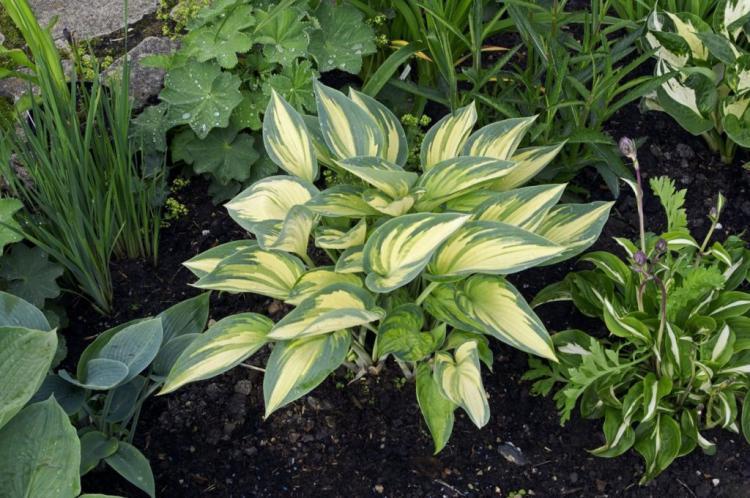
- ‘June’: The leaves of this variety are elongated and heart-shaped. They are creamy yellow in color with a green border. The center of the leaf is golden yellow and blue in spring. In addition, this variety of flowers pale purple. Due to its small size, it is also suitable for growing in pots.
- ‘Mediovariegata’: The special thing about this snow-feather funkie is the two-colored, green, and white striped leaves that are wavy and twisted.
- ‘Remember Me’: The leaves of this gray-blue funkie are creamy white and turn light green and gray-green towards the edge of the leaf. It blooms purple.
You can read an overview of the best-known species of hostas and many suggestions for varieties in our special article on the subject.
Planting hostas
Planting hostas is actually child’s play if a few simple rules are followed. Let us first take the best time to plant: Generally speaking, hostas can be planted throughout the vegetation period as long as there is no frost. In extreme drought and heat, you should refrain from planting. Planting in spring is ideal so that the host can develop early and be prepared for the hot summer. Wait until there are no more frosts to be expected, i.e. after the ice saints in mid-May.
You might so like: Hosta Plants (Cortaderia selloana): When, How And What To Fertilize?
When is the right time to plant hostas?
- Possible from May to October
- It is ideal in May after the last frost
Of course, planting hostas also includes the right location and the right approach to planting. In the next few sections, we will turn you into a host plant expert.
The perfect location for planting hostas
Hostas are considered to be shadowy plants, but this does not always have to be the case. Because the different types and varieties have very different demands on the location, especially the lighting conditions. When buying, therefore, pay close attention to the choice of variety and consider in advance where in your garden you want to place your new Funkia. In this way, you can specifically select a hosta that suits your situation.

In general, most hostas feel more comfortable in partial shade and shade than in the blazing sun. The darker and more delicate the leaves, the more shady the location should be. Conversely, this means: hostas with thick and firm leaves that are lighter green or yellowish can withstand direct sunlight better. In terms of soil conditions, the different varieties are more similar. Fresh, well-drained soils are ideal for hostas. If they are also rich in nutrients and humus and are not prone to waterlog, your host will feel right at home in their new home.
Where to plant hostas
- The location strongly depends on the type and variety
- Generally preferred in the shade or partial shade rather than in the full sun
- The thicker, firmer, and more yellowish the leaves, the more sun the host can tolerate
- Nutrient-rich and humus-rich soil
- Well drained and fresh soil
- No waterlogging
This is how you go about planting hostas
Planting your hosta shouldn’t pose too much of a problem. First, prepare the planting site by loosening the soil well. In compact, poorly drained soils, incorporating gravel can help loosen the soil even more. Put compost or a long-term organic fertilizer in the soil to provide it with nutrients and to support soil life. Our organic flower fertilizer with organic long-term effects creates the best starting conditions for your host and is also sustainable and resource-saving.
When all the preparations have been made, a planting hole is dug into which the host plant is placed. The plant should not stand any deeper in the hole than it was previously in the pot. Then fill the planting hole with the excavated material and water the hosta well. If several hostas are placed next to each other or close to other plants, you should keep a planting distance of at least 50 centimeters and keep in mind that some varieties of hostas can grow very large and overgrown.
Planting hostas: step-by-step instructions
- Loosen the soil well
- Work in some gravel if necessary
- Provide soil with compost or a fertilizer with organic long-term effects
- Dig the planting hole
- Place the host in the middle of the hole
- Only place as deep in the earth as the plant was in the pot
- Fill the hole with excavated material
- Pouring on
- Plant spacing: 50 – 70 cm
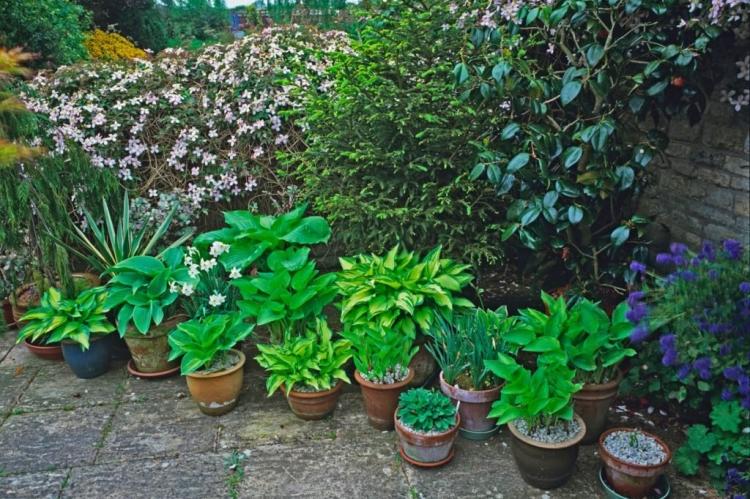
Hostas can also grow very well in the bucket and beautify the balcony, front yard, or terrace. Select a sufficiently large planter for this and create a drainage layer made of expanded clay or potsherds. A suitable substrate is a simply potting soil, which you enrich with compost or a fertilizer with an organic long-term effect. We also recommend our organic flower fertilizer for hostas when cultivating in pots. Fill the pot one-third with the substrate and place the hosta in the middle of the pot. Then the pot is filled with substrate and the plant is watered.
Planting hostas in pots at a glance:
- Choose a suitable planter
- Create a drainage layer
- Enrich the substrate with compost or a fertilizer with long-term organic effects
- Fill the planter one third with the substrate
- Insert the hosta in the middle
- Fill the pot with substrate
- Pouring on
Maintain hostas
Once your hostas are planted, most of the work is done and you can sit back in the garden chair and watch your hostas grow. Hostas live for many years and develop into large and magnificent plants if left to grow in peace. Just make sure you have the right supply of water and fertilizer and your hosta will practically grow by itself.
Pour hostas
Since it is native to the humid mountain forests of Japan, the host likes it sufficiently wet. This is especially important with potted plants. You have to avoid waterlogging as well as prolonged drought. Make sure that your potted plant is sufficiently moist by watering it regularly. So, especially on hot days, you may even have to water in the morning and the evening. Due to their large leaf mass, hostas constantly consume a lot of water. Young hostas in the garden are also dependent on regular watering. Only when the plants get older do the roots reach deeper soil layers and watering is only necessary on particularly hot and dry days in summer.
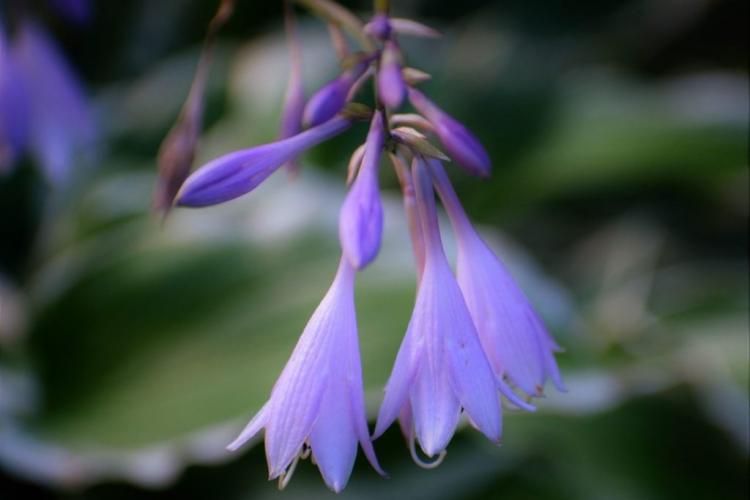
How are hostas poured?
- Avoid prolonged drought and waterlogging
- Better damp than too dry
- Water potted plants regularly
- Older hostas in the garden only need to be watered on particularly hot days
Fertilize hostas
Hostas do not need excessive nutrients. Once a year you should still be busy with the fertilization of your ornamental foliage. In the first year, it is sufficient if basic fertilization is carried out when planting. Every subsequent year, your hosta will be happy to receive a primarily organic fertilizer in the spring. This has the advantage that the nutrients are not directly available to the plants, but must first be converted by microorganisms and made available to the plants. In this way, nutrients are not leached into the groundwater and the plant is provided with all valuable nutrients over the long term. Organic flower fertilizer with organic long-term effects is ideal. Alternatively, a portion of compost is also suitable.
This is how hostas are properly fertilized:
- Basic fertilization when planting
- Then fertilize once a year in spring
- Organic fertilizers such as compost or a fertilizer with an organic long-term effect are ideal
- Our organic flower fertilizer is the best choice for your host
To multiply hostas
The best way to multiply hostas is by dividing them. The process is simple, but not always successful. The ideal time for propagation is on frost-free days in spring. Using a digging fork, carefully dig up the hosta that you want to share. You remove the soil from the rhizome by gently tapping it. Now divide the root ball in half with a spade. Both parts can now be replanted at a suitable location. In the next few weeks, you should regularly supply the multiplied hostas with water so that they can grow well.
Summary: Increase of hostas by division
- In the spring before budding
- Dig up the root ball and remove the soil
- Divide the bale with a spade
- Plant sections again in a suitable location
- Water regularly
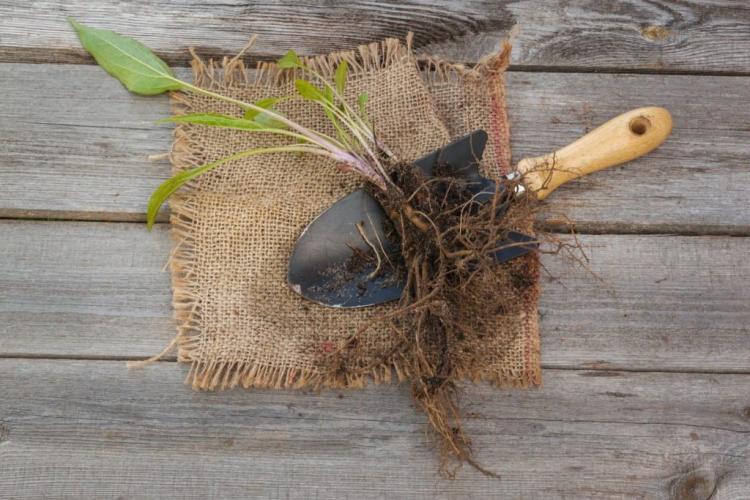
Are hostas poisonous?
Even if the rumor persists to this day that hostas are poisonous, we can reassure you: No part of the plant of the hosta is poisonous, neither for humans nor for animals. The family to which the hostas belong gives us information about this: the asparagus plants. Even if this practice has not yet found its way into our country: In Japan, the leaf buds of hostas are consumed and prepared in a variety of ways. The Japanese funkie buds can be tasted candied, deep-fried, pickled in vinegar and oil, or steamed as vegetables. And who knows? Perhaps you will now see your hosta with different eyes and taste the delicate buds of your hosta even in early summer?
